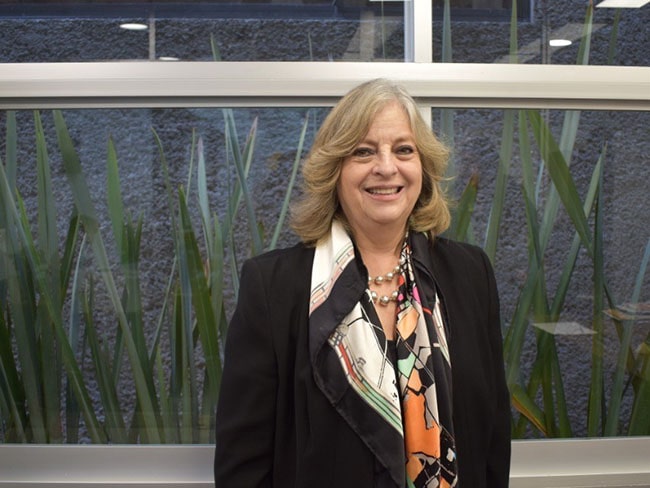An Initiative to Prevent Suicide

Source: El Semanario
By: Asunción Álvarez
Likewise, it was determined to create the National Council for Prevention of Suicide which shall seek to reduce—as a matter of general health and through an interdisciplinary approach—the incidence of suicides, a problem that has increased alarmingly, as it was recognized by the president of the Senate Health Commission, Miguel Ángel Navarro Quintero. Senator Mónica Fernández Balboa, from the Morena Parliamentary Group and advocate of one of the initiatives, called for the recognition of this terrible problem suffered by children, adolescents, adults and old persons due to some distress that often goes unnoticed by relatives, teachers, doctors and even specialists. The other initiative was promoted by Senator Verónica Martínez García of the political group Institutional Revolutionary Party.

We must applaud the approval of these initiatives seeking to address suicide as a public health problem and which has been defined as “the deliberate and self-inflicted action of a person to cause the loss of his life”. It is recognized that death by suicide means, on the one hand, the desperate ending of life of a person who saw no other way to put an end to the affliction he was suffering; and on the other hand, a painful experience for their relatives whose effects can last for a long time. The approved reform seeks to address what has been a failure of society who has totally ignored these problems or has only attended them to a certain extent.
To have an idea of the size of the problem, data provided by the World Health Organization are useful: close to 800,000 people commit suicide each year in the world, which is equivalent to a suicide every 40 seconds. The most widely used suicide methods are hanging, firearms, and ingestion of pesticides. Suicide is the third leading cause of death for youngsters between the ages of 15 and 19.
When focusing on our country’s situation, the National Institute of Statistics and Geography (INEGI) reported 6,808 suicides in 2018 (5,540 men and 1,265 women). Although more men commit suicide and more women attempt it, the difference in the prevalence of suicide between men and women has been decreasing in recent years. According to the INEGI, the highest number of suicides in 2018 involved young people aged 20 to 24 (1,035), followed by young people aged 25 to 29 (890), 30 to 34 (810) and 15 to 19 (800). Including minors between 10 and 14 years old (229), youngsters and minors’ suicides represent 30.3% of the total. It is worth mentioning that I found this data in the article COVID19, Depression and Suicide, which also suggests that the impact of the pandemic on the mental health of many people could lead some of them to seek suicide.
Carmen Fernández, director of Youth Integration Centers, points out that this has already happened and that suicide has increased among youngsters, the population feeling the greatest emotional impact during the pandemic (Excelsior). It is worth mentioning the relevant response given in recent months, publicly and privately, to offer help to those who feel their mental health affected. There is an significant list of hotlines to provide guidance and support. The objectives included in the reform approved by the Senate (prevent suicide, care for those who suffer the consequences from a failed attempt or the loss of a close relative who committed suicide) brings up a complex challenge. We face a highly stigmatized issue representing an obstacle to ask for help for people who are thinking in committing suicide.
If in our society death is a taboo topic that cannot be discussed openly and directly, and suicide is all the more. And this difficulty to talk about death and suicide leads to very flawed ideas. For instance, there’s people who believe that talking about death is a way of invoking it (which in turn implies the erroneous idea of believing that not talking about it keeps it away). Likewise, many people believe, even some health professionals, that someone who is going through a crisis or suffers from a mental problem should not be asked if they have suicidal ideas because that could induce them to have them. This is a serious error: If someone has not thought about suicide, he will not start to think about it because he is asked about it; but if someone has done so, it will be a great relief for him to be able to share his ideas and talk about the problems that have led that person to consider suicide as the only way out of the situation he’s living.
There are several factors leading to suicide: biological, psychological, social, environmental and cultural. As María Elena Medina Mora points out, it is important to recognize and name them in order to work on them and being able to intervene to prevent suicide. Have social problems with psychological repercussions, or biological problems that cause mental illness more influence? In fact it is a combination of both. It has certainly been discovered that people who commit suicide or attempt it, mostly suffer from some mental illness; but there are also suicides instigated by hopelessness, impulsivity and stress of people who were not diagnosed with a mental disorder. It is crucial to identify the conditions that could lead to suicide and offer support in a timely manner, with empathy, respect and with the necessary preparation. It is important to submit to a follow up people who have already attempted suicide, because previous attempts are a strong predictor of suicide risk.

On the other hand, the problem must be addressed from a gender perspective because it shows up differently in men and women. Finally, it is very important for the media to handle properly the issue to avoid both its stigmatization and trivialization. I recommend the lecture that Dr. Medina Mora gave at El Colegio Nacional in which she discussed these and other aspects about suicide, stressing the problem in youngsters, as they are the most affected population which, to a large extent, is due to the fact that it is a group very exposed to violence.
In order to comply with experts’ recommendations to prevent suicide and to address the aftermath of suicide deaths, we require programs having funds to guarantee that they are carried out. The above-mentioned reform is a crucial step to make this possible. Among other objectives, it seeks to make society in general aware about the suicide risk factors by relying on the mass media and the use of new technologies, as well as activating telephone lines and chatrooms to attend critical situations. The question is to get across, to those who have considered committing suicide or have endured death due to the suicide of a loved one, the message that they are not alone. As the specialists have recommended, we must ensure that the first level care health personnel is duly trained to identify people who reveal symptoms and conflictive situations implying the risk of having suicidal ideas and behaviors, either to attend them or to refer them.
In addition to the definition used in the initiatives approved in the Senate, suicide can be defined as “the deliberate act of taking one’s life”, in which the notion of self-inflicted injury is excluded. And this allows us to consider an aspect of suicide not included in the ratified reform (there’s no reason for it), but related to the central theme of this article, which is to look for the best end of life. Suicide, a term loaded with a negative connotation, in fact can be considered some kind of voluntary death, this, of course, as long as there it includes deliberation, freedom and choice, constituents that may be lacking in situations where people are tormented or suffer from mental illness, although this is not a rule either. This leads me to point out that just as there are suicides that society must prevent, there are others that it should support, such as those of patients who suffer from a disease that causes them excruciating pain and ask for a medically assisted suicide (illegal in our country) to have a safe and painless death.
As we see, the term “suicide” can imply very different actions. Several are very painful because they are the outcome of a lonely suffering, because they leave an immense distress among the survivors and because they would not have occurred if the person had receive comfort helping them to accept continue living; others, which are the conclusion of a deep reflection on life and the last exercise of freedom of a person who decides to stop living in a way he considers unworthy. Hence, two attitudes are expected from society: one preventing suicides in some cases (the majority, it must be said) and one supporting them in others. Of course, we must recognize that these two situations can clearly be contrasted as the extremes of a continuum, but there may be many situations in between in which it would not be easy to decide if there is an intention to commit suicide and therefore that should be prevented or endorsed.

Through media and films we have been informed that the Swiss organization Dignitas helps commit suicide to people, both Swiss and foreign, who want to put an end to their lives and so stop their excruciating pain. The main criterion that anyone must fulfill to receive their help is to prove that he or she has the mental capacity to make the decision to die; they also require the diagnostic evaluation of a doctor who decides whether to prescribe the lethal dose of drugs that the organization’s specialists will provide the person who wants to die so that he / she can take it by himself while being accompanied.
The full name of this organization is Dignitas – To live with dignity – To die with dignity, and among its objectives—in addition to help people commit suicide—it includes suicide prevention. Above all, it encourages people to seek help to talk about their life and death plans, and to be heard without taboo, paternalism or stigma. That way, Dignitas has helped people who keep living because they found solutions to their suffering (physical or emotional) they used to consider irremediable. Of course, it has also helped to die many people convinced that they wanted to have the option of committing suicide and, that knowing that they had the appropriate help to do so they did not have to seek their own death in advance and in a violent way.
In Mexico, we must move forward to back-up the will of persons who, after a deep and accompanied reflection, conclude that the best thing for them, due to the pain caused by their illness, is to put an end to their life. For the time being, we celebrate that in our country an important step is being taken to help people who are not in this situation or don’t have a thoughtful, discussed and assumed conviction, but who feel compelled to commit suicide due to the problems they face and the suffering they bear in loneliness and despair, believing death is their unique way out. We want these people to find another way and be able to find solutions and live without suffering. The approved initiatives remind us that, as a society, we all have to contribute to achieving this.

